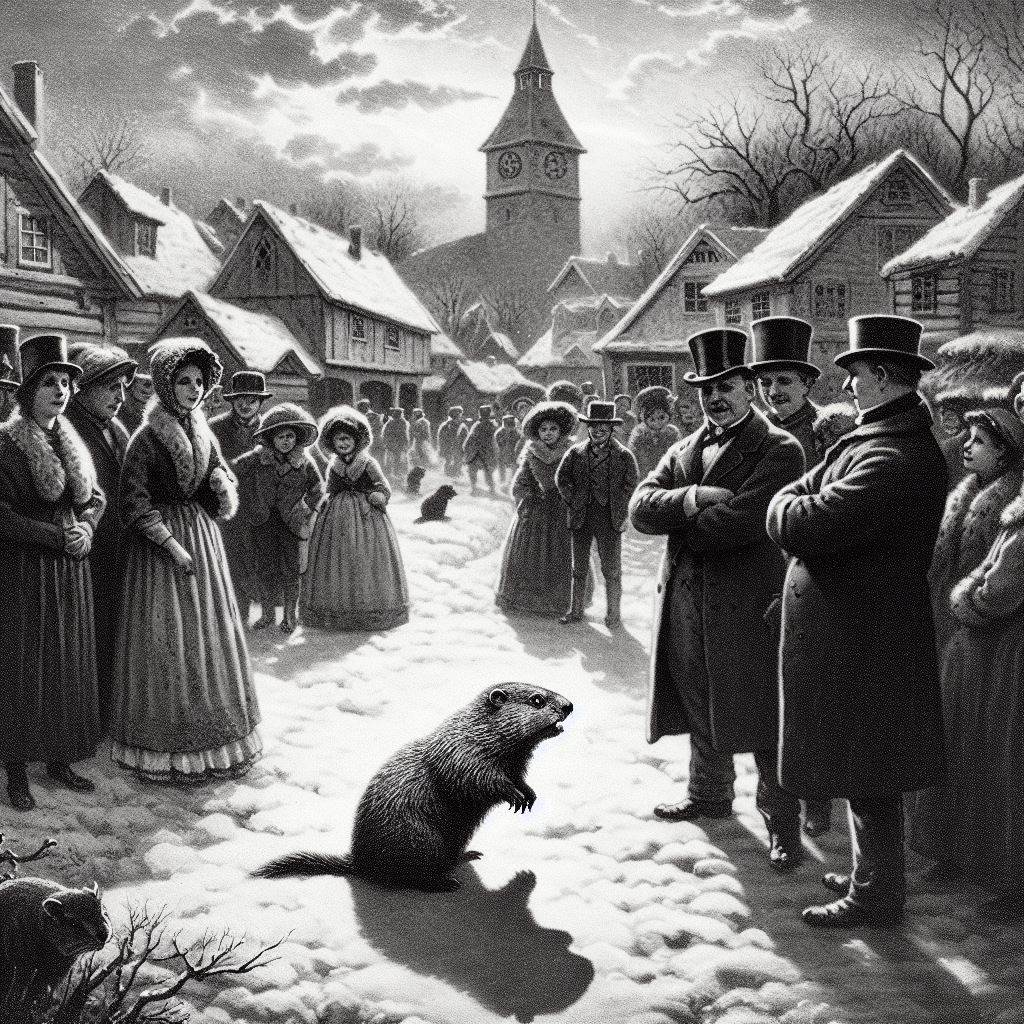Groundhog Day: A Holiday with Deep German Roots
GERMAN HERITAGE USA | AFFILIATE DISCLAIMER: This post may or may not contain affiliate links which means we may receive a commission for purchases made through links. We will only recommend products that we have personally used or that we truly trust. Learn more on our Private Policy and Disclaimer Page located under our Terms Of Service tab above.
Every February 2nd, a furry oracle emerges from its burrow, its shadow dictating the fate of winter’s grip. This, of course, is the legendary Groundhog Day, a uniquely North American tradition steeped in folklore and fun.

But did you know its roots lie not in snowy fields, but in the sun-drenched meadows of Germany? That’s right, Groundhog Day, with its quirky charm and weather predictions, bears the distinct paw prints of German immigrants. So, grab your lederhosen (or maybe just a warm coat) and burrow into the surprising history of this beloved holiday.
From Sunbeams to Shadows: The Germanic Origins
Imagine the scene: It’s the Christian holiday of Candlemas, February 2nd, in medieval Germany. Sunlight peeks through the clouds, casting hopeful beams on shivering peasants. They rejoice, for according to an ancient belief, sunshine on this day promises a harsh “second winter” with six more weeks of cold. But wait, what scurries across the sunlit path?

A badger, emerging from its winter slumber! If the badger sees its shadow, folklore warns, the extended winter is assured. This “Dachstag,” or Badger Day, held immense significance for farmers, their livelihoods hinging on the season’s whims.
Planting Traditions in Pennsylvania
Fast forward to the 18th and 19th centuries. German immigrants, particularly those settling in Pennsylvania Dutch Country, brought their customs and folklore across the Atlantic. However, the American landscape lacked badgers. Enter the resourceful groundhog, a close relative with similar hibernating habits. Presto! The tradition was reborn, with the furry Pennsylvanian cousin assuming the weather-predicting mantle.
The first documented mention of a groundhog forecasting winter dates back to 1840, and by the late 19th century, the custom had firmly rooted itself in American soil.
A Groundhog by Any Other Name? The Differences Between These Burrowers
While groundhogs and hedgehogs share a love for burrowing and slumbering, they’re distinct creatures. Groundhogs, also known as woodchucks, are larger, measuring up to 2 feet long, with short legs and stout bodies. They’re herbivores, feasting on grasses, plants, and fruits. Hedgehogs, on the other hand, are spiny insectivores native to Europe, Africa, and Asia.

They’re much smaller, typically reaching only 8 inches in length, and their prickly armor is a key identifier. So, while the German tradition used hedgehogs, the American adaptation naturally substituted the more readily available groundhog.
Festive Festivities: From Punxsutawney Phil to Shubenacadie Sam
Groundhog Day celebrations vary across North America. The most famous event unfolds in Punxsutawney, Pennsylvania, where the legendary Punxsutawney Phil emerges from Gobbler’s Knob at dawn. A tuxedo-clad “Inner Circle” interprets Phil’s shadow-seeing abilities, declaring either an early spring or six more weeks of winter. Festivities include parades, food stalls, and a lively atmosphere, attracting thousands of visitors each year.
Punxsutawney Phil, Endless Possibilities: Why Groundhog Day Never Hibernates
Every February 2nd, amidst the Punxsutawney crowds and hopeful whispers of spring, Bill Murray’s cynical weatherman Phil Connors finds himself trapped in a time loop, reliving Groundhog Day over and over again.
This comedic exploration of personal growth and self-discovery, released in 1993, has transcended its genre to become a cult classic, enjoying renewed popularity every year with a dedicated following. But what makes this story about a man reliving the same day resonate so deeply, even decades later? Firstly, the Groundhog Day narrative taps into a universal human yearning – the desire to change and become better versions of ourselves.
Phil’s initial hedonism and apathy gradually transform into acts of kindness, self-improvement, and ultimately, love. The time loop acts as a metaphorical playground, allowing him to experiment, fail, and learn without lasting consequences, a fantasy many of us secretly harbor.
Beyond its relatable themes, the film’s enduring appeal can be attributed to its clever blend of humor and philosophy. Harold Ramis’s masterful direction masterfully balances slapstick and existential ponderings, making us laugh while prompting introspection. The Groundhog Day tradition itself, with its roots in German Candlemas celebrations, adds a layer of historical intrigue, reminding us of how ancient customs evolve and intertwine with modern narratives.
But Groundhog Day’s magic truly lies in its cyclical nature. Every February 2nd, as Phil wakes up to Sonny & Cher’s “I Got You Babe,” viewers return to Punxsutawney alongside him. This shared experience fosters a unique community, uniting audiences across generations and geographical borders. Whether rewatching for the hundredth time or discovering it anew, the film offers a comforting reminder that even within the constraints of repetition, growth and transformation are always possible.
So, as you witness Punxsutawney Phil emerge (or not), remember: Groundhog Day isn’t just about predicting spring; it’s a timeless exploration of human potential, reminding us that every day, like a blank February 2nd, holds the possibility for a new beginning.
Canada also joins the groundhog fun. Nova Scotia boasts Shubenacadie Sam, who awakens at sunrise at Shubenacadie Wildlife Park. Unlike Phil, Sam’s prediction hinges solely on the presence or absence of sunshine – no shadow interpretation required. Other notable groundhogs include Staten Island Chuck in New York and Wiarton Willie in Ontario, each with their own dedicated following and festivities.
Beyond the Shadow: Fun Facts and Folklore
Groundhog Day isn’t just about predicting the weather. It’s a day for lighthearted fun, community gatherings, and even a touch of superstition. Did you know that if a female groundhog sees her shadow, it signifies an early spring, while a male predicts six more weeks of winter?

Or that Punxsutawney Phil has never seen his shadow twice in a row? Some even believe groundhogs can control the weather themselves! While the science behind these predictions remains questionable, the folklore adds a unique charm to the occasion.
A Legacy of Tradition: Embracing the Groundhog Spirit
Whether you believe in Punxsutawney Phil’s prognostications or simply enjoy the festive atmosphere, Groundhog Day offers a delightful break from winter’s monotony. It’s a reminder of our enduring connection to nature, the changing seasons, and the traditions we inherit from generations past.
So, the next time February 2nd rolls around, don your winter gear, gather your friends and family, and celebrate the furry oracle and its surprising German roots.
Who knows, maybe you’ll even catch a glimpse of a shadow (or not) and join the lighthearted fun of predicting the weather with a groundhog!
